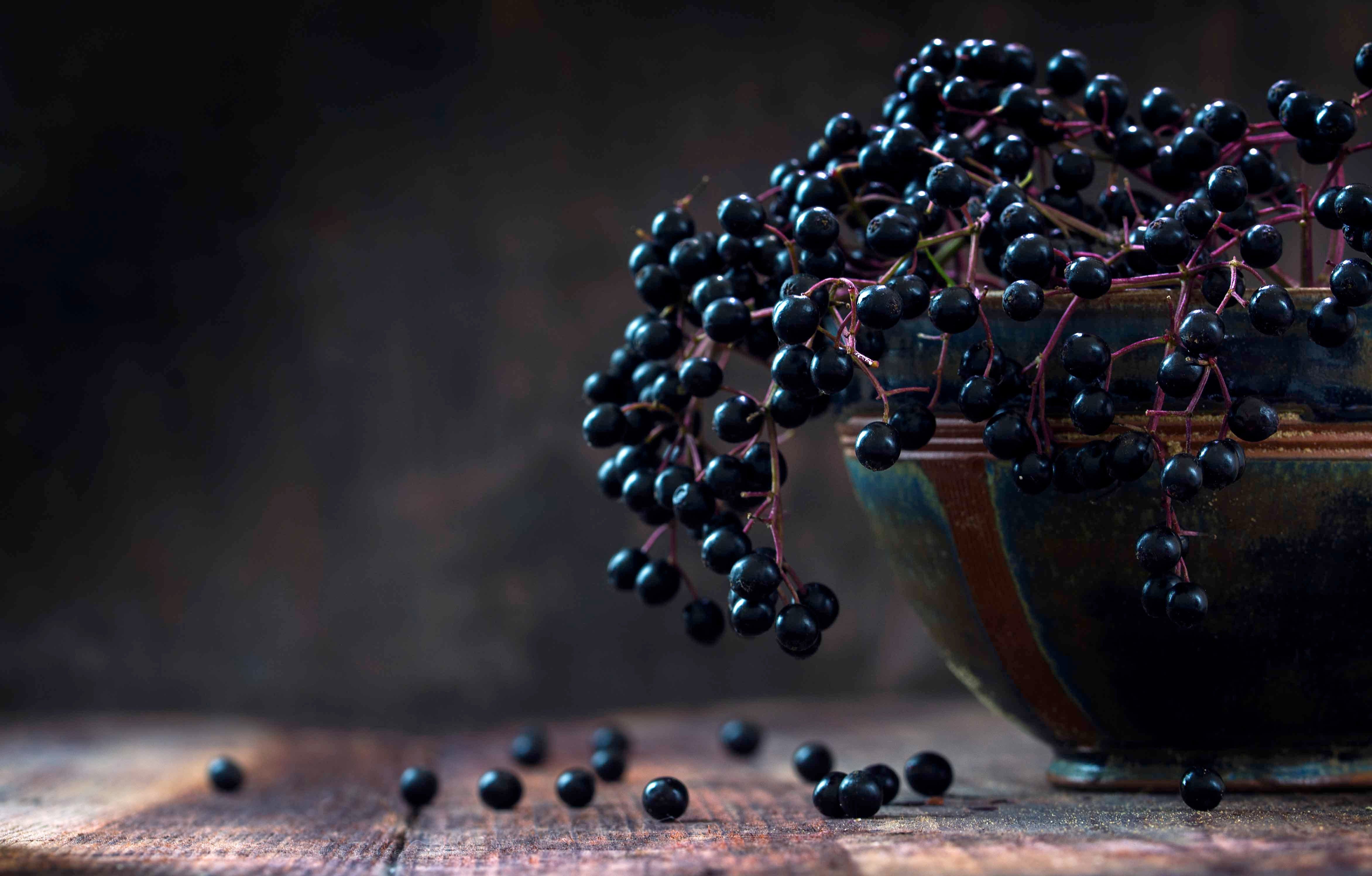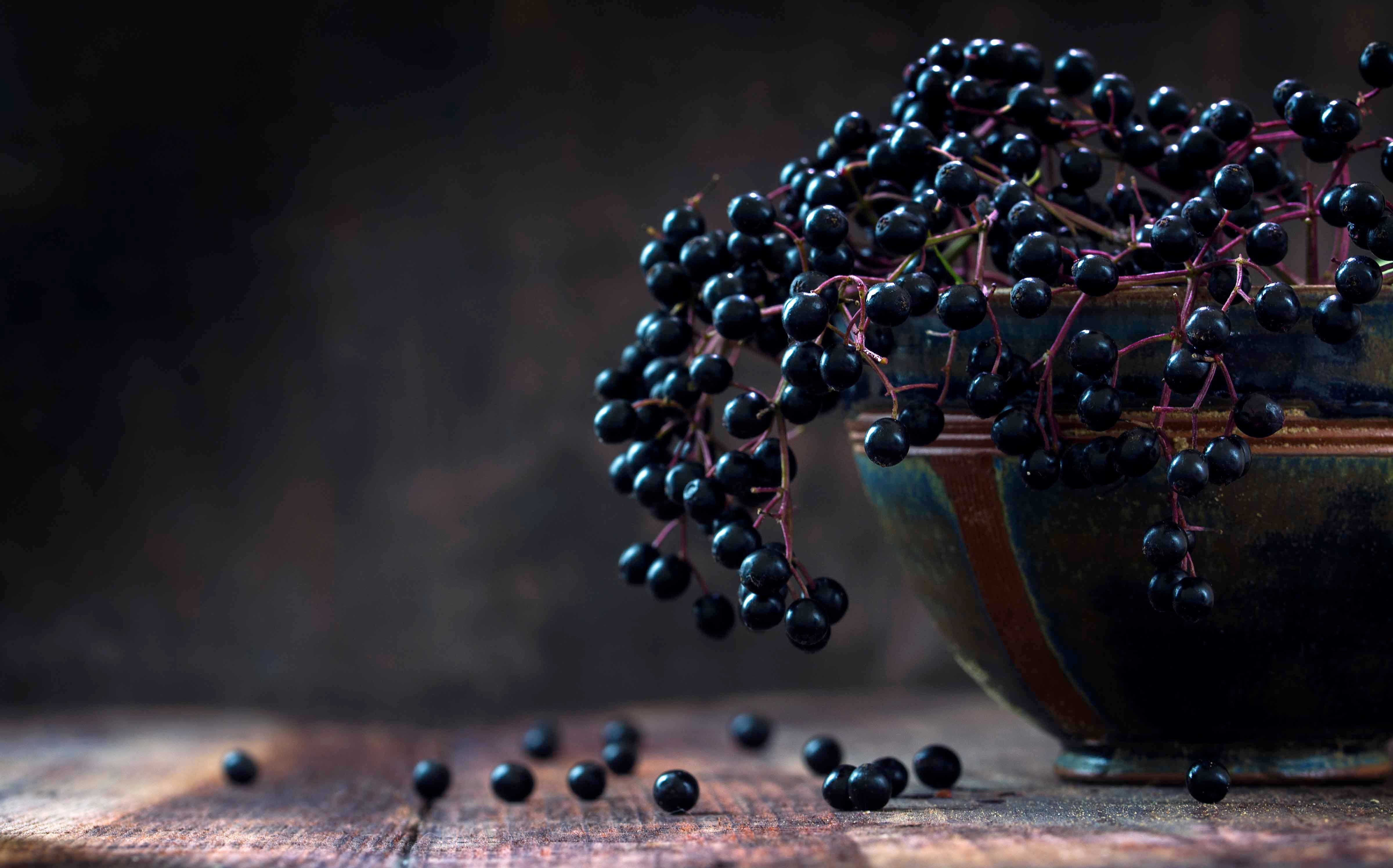Exploring elderberries


You’ve heard of strawberries, blueberries, blackberries, and raspberries, but have you heard of elderberries? These little fruits are gaining in popularity this year, with Pinterest reporting searches for elderberry recipes are up a whopping 685 per cent.
So, what’s all the buzz about?
First of all, elderberries are considered by many to be a natural remedy for various ailments, with a history of medicinal use dating back to Ancient Egypt and crossing multiple cultures over centuries.
Quick Facts
Here are a few quick facts about the elderberry, according to The Herb Society of America.
- Latin name: Sambucus nigra (European elder) and Sambucus canadensis (American elder) from the family Adoxaceae
- Grows on a shrub or small tree
- Seeds found in Neolithic pole-dwellings in Switzerland suggest elderberries were in cultivation by about 2000 BCE
- Elderflower water was once used on the skin to promote a fair complexion and remove freckles
- Ancient Romans made a hair dye from elderberry juice
Elderberries are considered an immune system booster and have been known to help reduce cold and flu symptoms. Other purported health benefits include lowering blood sugar and acting as a natural diuretic, and laxative.
Additionally, the dark purple colour of the berries may contribute to even more health benefits. Like other purple fruits and vegetables, such as blueberries, red cabbage, and eggplant, elderberries contain anthocyanins, a type of antioxidant that gives such plants their purplish colour and, although the research is ongoing, may help improve cardiovascular health, prevent cancer, and help with dementia.
On top of that, elderberries, like all berries, are really good for you. They’re full of nutrients like vitamin C and they have lots of dietary fibre – there’s about seven grams of fibre in every 100 grams of elderberries.
What can you do with them?
There are numerous uses for elderberries – and their flowers. The berries can be used much like other berries, but it is important to note you cannot eat them raw – they must be cooked first.
According to The Herb Society of America, the berries can be simmered with water to create a juice, which can then be turned into a syrup, wine or cordial. You can also turn the berries into jams and jellies or use them in pies and chutneys. The flowers are also edible, and are commonly dipped in batter and fried to make fritters. You can even make a cordial with the flowers.
The dried berries and/or the flowers can also be made into a tea (or you can buy elderberry tea bags), and there’s a range of elderberry products out there, too, from syrups and powders to lozenges and gummies.
